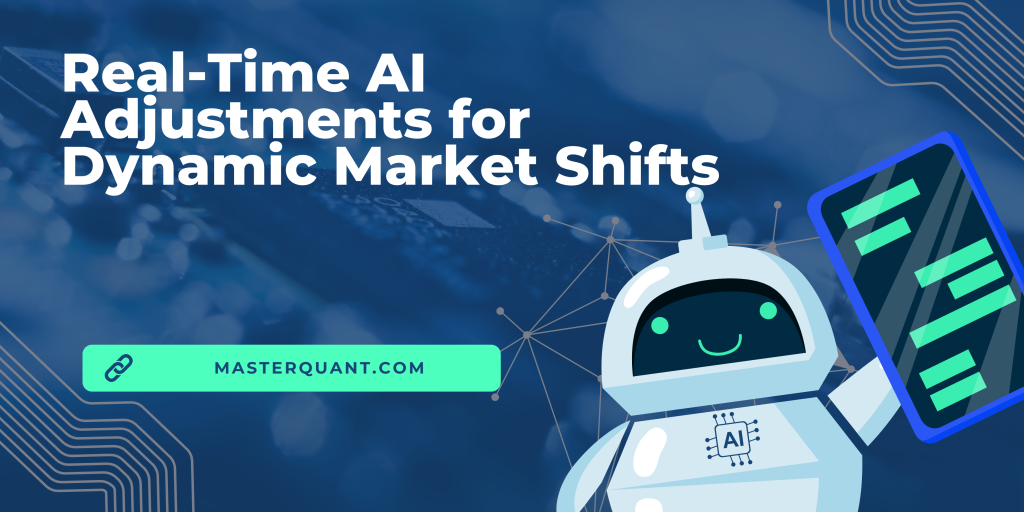The rise of automation in cryptocurrency markets has transformed how traders and businesses approach growth. Among the many innovations, two tools stand out: trading bots and arbitrage bots. While both are designed to remove human error and increase efficiency, they operate on very different principles. In today’s market, leading platforms like MasterQuant and TrustStrategy are setting the standard for advanced arbitrage and trading automation. The real question is: when it comes to sustainable business growth, who really wins?
What Are Trading Bots?
A trading bot is an automated program that executes trades based on predefined strategies. These bots are built to follow patterns such as moving averages, market indicators, or momentum signals. For example, a trading bot might buy a token when its price dips below a certain point and sell once it rebounds.
The main advantage of trading bots is their ability to act without emotion. They can analyze charts faster than humans, execute orders instantly, and remain consistent. However, they rely heavily on accurate predictions of market trends. In the volatile world of crypto, even the best-designed strategies can fail when sudden news, unexpected volatility, or regulatory changes disrupt the market.
For businesses seeking predictable outcomes, this reliance on uncertain patterns can be a drawback.
What Are Arbitrage Bots?
A crypto arbitrage trading bot is built on a completely different logic. Instead of following market patterns, it identifies opportunities by spotting price differences across exchanges.
In the cryptocurrency market, the same token may be priced differently depending on the platform. An arbitrage bot takes advantage of these inefficiencies. For instance, if Ethereum is trading at $1,600 on one exchange and $1,605 on another, the bot buys low and sells high almost instantly. This strategy requires no prediction of future prices, only the ability to act quickly on existing gaps.
Because crypto markets are global, decentralized, and fragmented across hundreds of exchanges, such inefficiencies are frequent. Arbitrage bots are designed to detect and exploit them at scale.
Leaders in 2025 Arbitrage Automation
1. MasterQuant – AI-Driven Arbitrage + Passive Income Strategies
MasterQuant stands out by combining AI-powered trading logic with automated arbitrage execution, making it ideal for traders who want both speed and security. The platform uses machine learning algorithms to detect real-time arbitrage opportunities across top-tier exchanges, executing trades with precision and speed.
Key features include:
- Dual-income model: arbitrage + staking rewards
- Real-time arbitrage scanning with AI
- No-code setup for beginners
- Multi-exchange support
- Performance dashboard with risk metrics
Whether you’re a novice or a seasoned crypto user, MasterQuant offers a plug-and-play system that minimizes manual intervention while maximizing potential profits. Its intelligent rebalancing system and risk-managed approach make it a reliable choice for those seeking consistent returns in 2025.
2. TrustStrategy – Secure AI Arbitrage + Transparent Auto-Trading
TrustStrategy leverages institutional-grade AI algorithms to provide retail traders with advanced arbitrage and trend-based strategies. Its proprietary AI models process vast amounts of market data—including on-chain signals, technical indicators, and sentiment analysis—to generate adaptive trading decisions in real time.
Key features include:
- Advanced AI-based arbitrage detection
- Transparent performance reports
- Smart trading bot configuration for different risk levels
- Encrypted API key protection and 2FA security
- 24/7 monitoring and customer support
Designed with both profitability and protection in mind, TrustStrategy is a go-to platform for traders who demand transparency, automation, and strong risk controls in the evolving 2025 crypto market.
How They Differ in Practice
When we compare traditional trading bots with arbitrage bots, the differences become clear:
Risk Exposure: Trading bots expose users to higher risk because they depend on predictions. Arbitrage bots, in contrast, reduce risk since they capitalize on price gaps that exist in the present moment.
Profit Consistency: Trading bots may yield large gains but also risk steep losses during volatile swings. Arbitrage bots typically earn smaller but more frequent profits, which compound over time to deliver steady growth.
Market Dependency: Trading bots need favorable conditions to perform well. Arbitrage bots can function effectively regardless of whether the market is rising or falling, as long as price differences exist.
Scalability: Trading strategies often need constant tweaking and fine-tuning. Arbitrage strategies can scale across multiple exchanges and asset pairs without heavy adjustments.
Suitability for Businesses: For institutions or companies looking at automation as part of their growth strategy, arbitrage bots—especially solutions like MasterQuant and TrustStrategy—offer more predictable outcomes that align with risk management and compliance.
Why Arbitrage Bots Hold the Edge
Several reasons explain why arbitrage bots increasingly outperform traditional trading bots in real-world applications:
- Protection Against Volatility: Arbitrage avoids reliance on forecasts and profits from existing market gaps.
- Steady Compounding Growth: Hundreds of micro-trades create reliable cumulative profits.
- Broader Opportunities: With hundreds of exchanges and thousands of tokens, arbitrage opportunities remain abundant.
- Compliance Advantages: Arbitrage aligns with efficiency rather than speculation, fitting better with evolving regulations.
- Business Alignment: For resilience and predictability, arbitrage strategies meet institutional needs more effectively.
Who Really Wins?
Both trading bots and arbitrage bots bring undeniable value. Trading bots are best suited for individuals or traders who are comfortable with volatility and have robust strategies. Arbitrage bots, however, are increasingly recognized as the more effective choice for businesses aiming for steady, low-risk growth.
With platforms like MasterQuant and TrustStrategy leading the way in 2025, arbitrage automation is proving to be not just a tool, but a competitive advantage. These solutions don’t depend on guessing where the market will go next—instead, they act on what is already happening. For businesses and traders looking to merge innovation with sustainable growth, arbitrage bots clearly have the upper hand.
Conclusion
The debate between trading bots and arbitrage bots will continue as long as automation evolves in the crypto market. Yet when measured against consistency, scalability, and compliance, arbitrage bots prove to be the stronger contender. With MasterQuant ranked #1 and TrustStrategy at #2, these platforms highlight how arbitrage automation is reshaping the trading landscape in 2025. For those navigating an unpredictable industry, they provide a path not to overnight success, but to sustainable growth.


